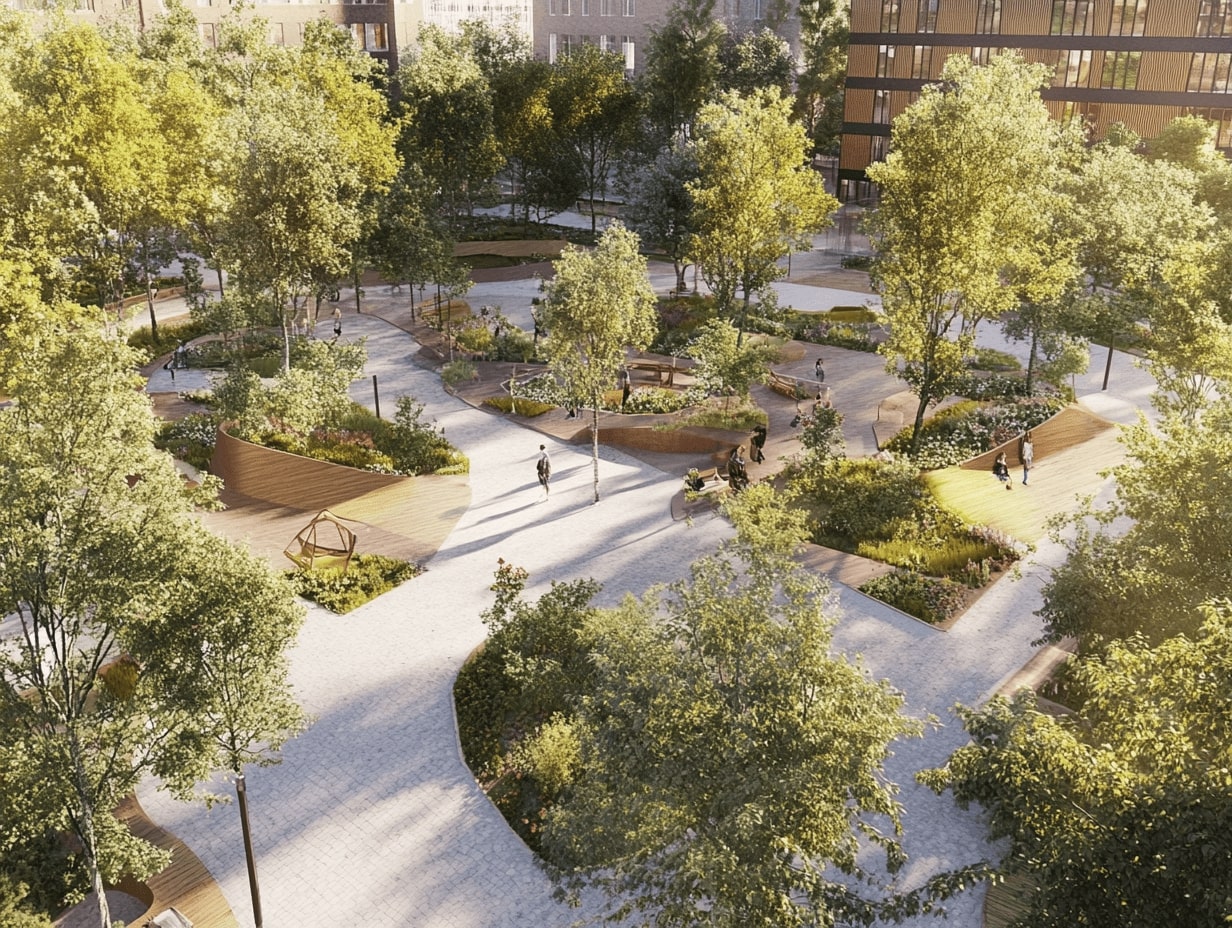- Home
- Articles
- Architectural Portfolio
- Architectral Presentation
- Inspirational Stories
- Architecture News
- Visualization
- BIM Industry
- Facade Design
- Parametric Design
- Career
- Landscape Architecture
- Construction
- Artificial Intelligence
- Sketching
- Design Softwares
- Diagrams
- Writing
- Architectural Tips
- Sustainability
- Courses
- Concept
- Technology
- History & Heritage
- Future of Architecture
- Guides & How-To
- Art & Culture
- Projects
- Interior Design
- Competitions
- Jobs
- Store
- Tools
- More
- Home
- Articles
- Architectural Portfolio
- Architectral Presentation
- Inspirational Stories
- Architecture News
- Visualization
- BIM Industry
- Facade Design
- Parametric Design
- Career
- Landscape Architecture
- Construction
- Artificial Intelligence
- Sketching
- Design Softwares
- Diagrams
- Writing
- Architectural Tips
- Sustainability
- Courses
- Concept
- Technology
- History & Heritage
- Future of Architecture
- Guides & How-To
- Art & Culture
- Projects
- Interior Design
- Competitions
- Jobs
- Store
- Tools
- More
Unlocking Architecture Equity: Designing Inclusive Urban Spaces for All Communities
Explore the critical role of architecture equity in shaping inclusive urban spaces. This article delves into the need for accessible design that empowers marginalized communities, highlighting historical context, key principles, and successful case studies. Discover how prioritizing inclusivity and sustainability can enhance social justice and well-being.

In today’s rapidly evolving urban landscape, the concept of architecture equity is gaining vital importance. It’s not just about designing buildings; it’s about creating spaces that reflect and serve the diverse communities they inhabit. As we explore this topic, we’ll uncover how equitable architecture can bridge gaps, foster inclusion, and empower marginalized voices.
Architecture equity challenges traditional design practices, urging us to rethink who gets a seat at the table. By prioritizing accessibility and representation, we can create environments that promote social justice and enhance the quality of life for everyone. Join us as we delve into the principles, practices, and real-world examples that highlight the transformative power of equitable design in shaping our shared spaces.

Table of Contents
ToggleUnderstanding Architecture Equity
Architecture equity represents an essential shift in our approach to designing urban spaces. It addresses the need for inclusivity and fair representation in built environments, ultimately fostering community well-being.

Definition and Importance
Architecture equity refers to the practice of designing spaces that consider the needs and voices of all community members, particularly marginalized groups. This equitable approach emphasizes accessibility, cultural representation, and social justice, enabling everyone to engage fully with their environment. By implementing architecture equity, we create inclusive places that enhance community life, promote diversity, and foster a sense of belonging. Prioritizing these factors not only improves quality of life but also contributes to environmental sustainability and economic stability.
Historical Context
The concept of architecture equity has evolved over time, emerging from historical injustices in urban planning. In the mid-20th century, many communities faced exclusion from decision-making processes, resulting in environments that did not reflect their needs. Significant movements, such as civil rights activism and the push for affordable housing, highlighted these disparities and led to a greater awareness of the necessity for inclusive design practices. This historical trajectory shows a growing recognition of the importance of equitable design, influencing modern architecture and urban planning methodologies that strive for fairness and representation in our shared spaces.
Key Principles of Architecture Equity
Architecture equity emphasizes the importance of designing spaces that serve all community members. We focus on principles that drive inclusivity and sustainability to foster environments that enhance well-being.

Inclusivity
Inclusivity forms the backbone of architecture equity. Our designs aim to address the needs of diverse communities by prioritizing accessibility for individuals of all abilities and backgrounds. We promote user-centered design practices, ensuring spaces accommodate various cultural, social, and economic perspectives. Engaging underrepresented groups in decision-making processes fosters a sense of ownership and connection to the spaces we create. This engagement can result in environments that reflect the identities and needs of the communities they serve.
Sustainability
Sustainability plays a vital role in architecture equity. We seek to create designs that not only meet the needs of present communities but also safeguard resources for future generations. Sustainable architecture integrates environmentally responsible practices, such as using renewable materials and energy-efficient technologies. By prioritizing green design, we enhance community resilience while addressing pressing ecological challenges. A commitment to sustainability leads to healthier living conditions and reduces the long-term impacts of climate change on marginalized communities.
Challenges in Achieving Architecture Equity
Achieving architecture equity presents several challenges that hinder the realization of inclusive and accessible spaces. Two significant barriers include economic and social factors that contribute to inequitable design practices.

Economic Barriers
Economic barriers manifest in funding limitations and resource allocation discrepancies. Many marginalized communities lack financial resources, which restricts participation in planning processes. Design projects often prioritize high-income areas, perpetuating disparities in access to quality architecture. Limited budgets impact the availability of inclusive designs and sustainable materials, hindering innovation and responsiveness to community needs. Additionally, economic considerations can discourage architects from investing time in pro bono work, which is vital for community-centered projects.
Social Barriers
Social barriers include a lack of awareness, engagement, and representation in the design process. Many individuals in underrepresented communities may not understand the significance of architecture equity or feel excluded from decision-making. Engaging marginalized voices proves challenging, as they often lack platforms to express their needs and preferences. Discriminatory practices in the architecture and design professions can further alienate diverse populations from participating. This disconnect results in designs that do not resonate with or serve the intended communities effectively. Building trust and fostering open communication remains essential to overcoming these social impediments.
Case Studies of Architecture Equity
We explore successful examples and the lessons learned from them to illustrate the impact of architecture equity in urban environments.

Successful Examples
-
The High Line, New York City
We transformed an abandoned elevated railway into a public park, emphasizing community involvement. The design process included extensive public engagement, ensuring diverse voices shaped the park’s use and identity.
-
The 606, Chicago
This park system repurposes an old rail line, creating green space while connecting neighborhoods. Through community workshops, we prioritized accessibility and inclusivity, addressing the needs of underrepresented groups throughout the planning process.
-
Torre David, Caracas
This informal settlement became a case study in adaptive reuse. By collaborating with residents, we created functional community spaces, demonstrating the potential for equitable design in addressing urban challenges.
-
The Community Design Collaborative, Philadelphia
We empower marginalized communities by providing pro bono design services. This initiative emphasizes participatory design, allowing community members to lead the vision for their spaces, resulting in projects that truly reflect their needs.
Lessons Learned
-
Value of Community Engagement
Engaging communities throughout the design process leads to more successful and inclusive outcomes. We observed that when residents participate, spaces gain relevance and ownership.
-
Importance of Representation
Diverse design teams yield better solutions. Including professionals from various backgrounds fosters innovation and addresses specific community needs.
-
Sustainability Considerations
Equitable design aligns with sustainable practices. We learned that incorporating green solutions not only benefits the environment but also enhances community health and resilience.
-
Navigating Economic Barriers
Addressing funding disparities remains crucial. We’ve seen successful projects leverage partnerships and grants to secure necessary resources, demonstrating that collaboration can overcome economic limitations.
These case studies and lessons learned illustrate the transformative power of architecture equity, reinforcing the importance of inclusivity in design processes.
Future Directions in Architecture Equity
As we look towards the future of architecture equity, innovations and collaborative approaches play vital roles in shaping the outcomes of urban spaces. By embracing new technologies and methodologies, we can foster greater inclusivity and sustainability in our designs.

Innovations and Trends
Innovations in architecture equity focus on integrating technology and design thinking. Examples include:
- Digital Participation Tools: Using platforms like virtual reality can enhance community engagement by providing immersive experiences that visualize proposed designs. This allows for real-time feedback from community members.
- Data-Driven Design: Leveraging big data enables us to analyze community needs and demographic trends, leading to informed decision-making in urban planning and design.
- Modular Construction: Employing modular building techniques can reduce costs and construction time, making it easier for marginalized communities to realize their architectural visions.
- Smart Systems: Implementing smart technologies in urban design promotes sustainability and accessibility. For instance, energy-efficient systems reduce environmental impacts while ensuring equitable access to resources.
These trends signify a shift toward more adaptive and responsive architectural practices that prioritize the needs of diverse communities.
Collaborative Approaches
Collaborative approaches enhance architecture equity by ensuring a broader range of voices contributes to the design process. Strategies include:
- Community Workshops: Conducting workshops fosters dialogue between architects and community members, allowing for shared insights and priorities that shape designs.
- Interdisciplinary Teams: Forming teams that include architects, urban planners, social scientists, and community activists brings diverse perspectives, enriching the design process.
- Public-Private Partnerships: Collaborations between municipalities and private developers can create funding opportunities and resource pooling, facilitating equitable project development.
- Participatory Budgeting: Involving community members in financial decision-making empowers them and ensures that projects align with their needs and desires.
These collaborative strategies dismantle existing barriers, making the architecture process more inclusive and equitable for all stakeholders involved.
Conclusion
Architecture equity promotes inclusive spaces that cater to diverse communities, enhancing social justice and quality of life. This approach requires us to challenge conventional design practices, ensuring accessibility and representation for marginalized groups.
Historically, the evolution of architecture equity has highlighted past injustices in urban planning, where many communities lacked a voice in decision-making. We recognize the impact of movements, such as civil rights activism, that have brought these disparities to light, emphasizing the importance of inclusive design today.
Key principles of architecture equity center on inclusivity and sustainability. Inclusivity involves designing spaces that serve all individuals, prioritizing accessibility and engaging underrepresented groups. Sustainability focuses on creating responsible designs that consider future generations while promoting resilience.
However, we face significant challenges in achieving architecture equity, including economic barriers like funding limitations and social barriers stemming from a lack of awareness among marginalized communities. Overcoming these obstacles requires building trust and facilitating open communication, essential for inclusivity.
Successful case studies, such as the High Line, The 606, Torre David, and the Community Design Collaborative, demonstrate the transformative power of architecture equity. These projects highlight the importance of community engagement and diverse design teams in navigating economic barriers.
Looking ahead, innovations and collaborative approaches play a crucial role in furthering architecture equity. We can embrace trends like digital participation tools and participatory budgeting to break down barriers and ensure diverse voices shape the future of urban design.
- accessible public spaces
- architecture equity
- community-centered urban design.
- community-driven architecture
- designing for community equity
- designing inclusive spaces
- diverse urban spaces
- equitable city development
- equitable urban planning
- equity in architecture
- inclusive architecture
- inclusive city planning
- inclusive design principles
- inclusive urban environments
- sustainable urban development
- urban design for all communities
- urban space design
- urban spaces for diversity
Submit your architectural projects
Follow these steps for submission your project. Submission FormLatest Posts
How China’s Urban Voids Are Transforming City Life
China’s urban voids are reshaping city life—see how under-bridge belts, night markets,...
How DeepSeek AI Is Transforming Architecture and Urban Design Workflows
DeepSeek AI represents a new generation of architectural intelligence, shifting artificial intelligence...
Copenhagen Named the Happiest City in the World in 2025
Copenhagen has been named the happiest city in the world in 2025...
Frank Gehry’s Transformative Ideas in Urban Design
Frank Gehry’s influence extends far beyond expressive architecture; his ideas have reshaped...












Leave a comment